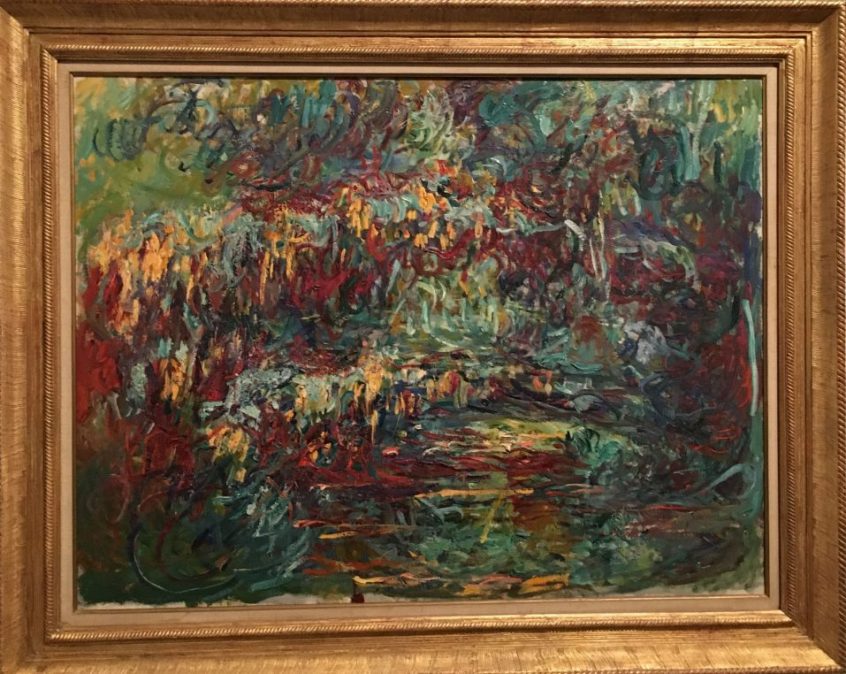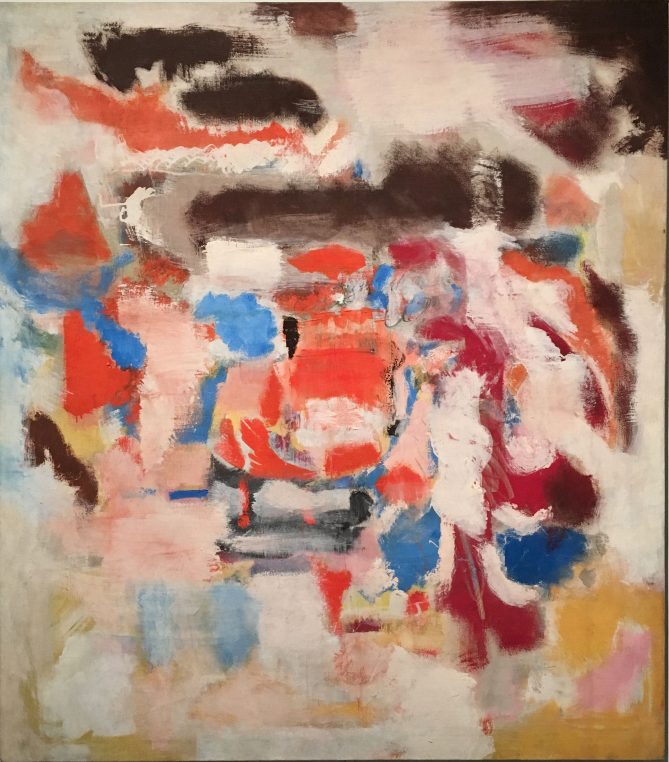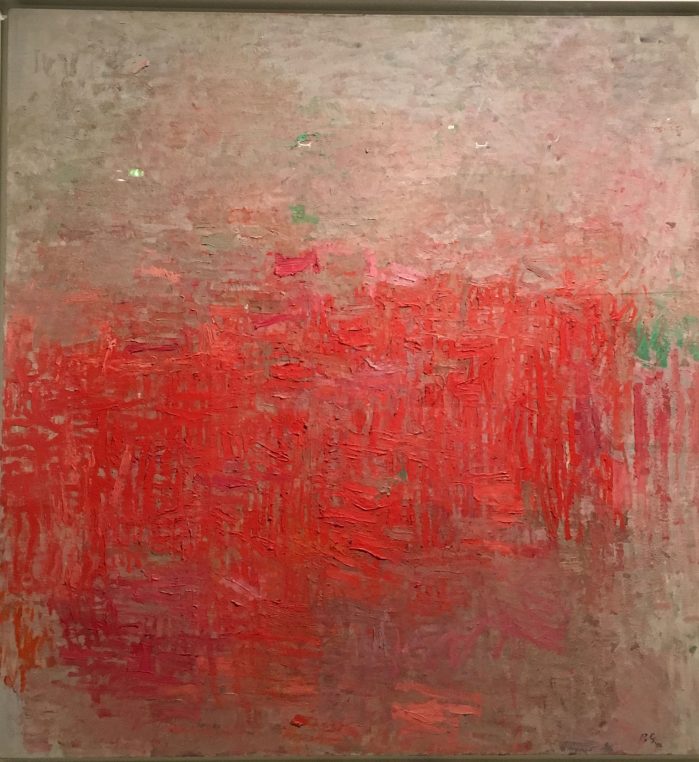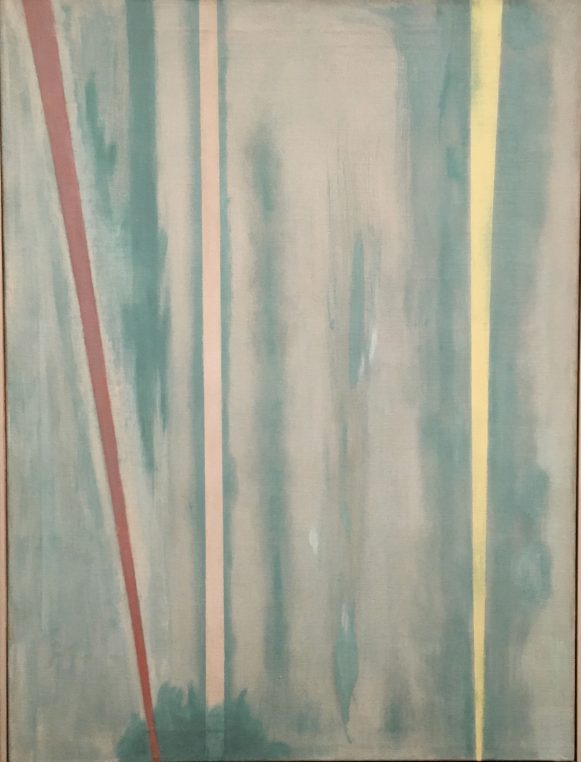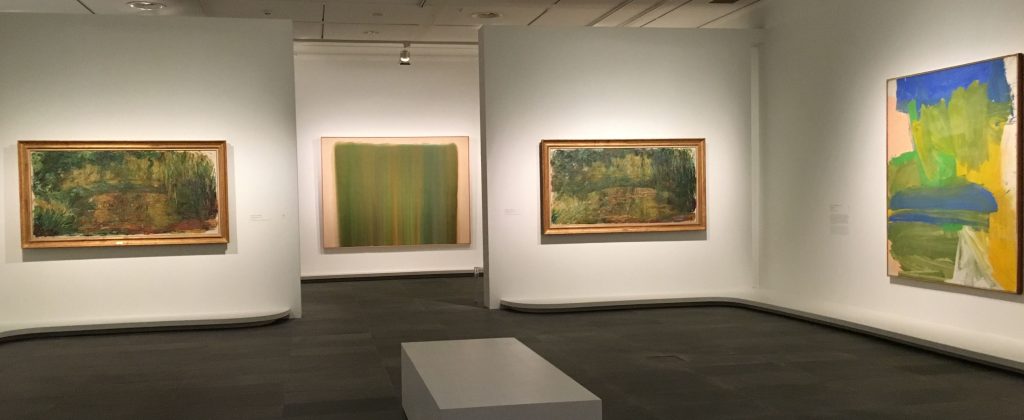
Two paintings by Monet of “Le Pont japonais” with Morris Louis’, Vernal 1960, (center) and Willem de Kooning, Villa Borghese, 1960 (right)
When Alfred Barr bought a large “Nymphéas” for MoMA in 1955, Monet suddenly became the hero of “Mainstreams in Modern art” facing “Autumn Rhythm” by Pollock in John Canaday’s book on abstract expressionism in America. Based on a number of writings of the fifties by art critic Louis Finkelstein and Clement Greenberg, the new exhibition at Musée de l’Orangerie is curated by Cécile Debray, its director. It shows some of the most wonderful American art from Mark Rothko to Philip Guston who brought back Monet into fashion.
Claude Monet was not alive any more to see his amazing Waterlilies hanging in l’Orangerie in 1927. He had offered eight very large compositions (of 22 paintings) to Georges Clemenceau to celebrate the victory of 1918. These 80 meters of painting can be seen between water (the Seine) and garden (the Tuileries) at l’Orangerie, any day of the week except Tuesdays. They hang in two oval rooms and remind me of the peace and mysticism of the octogonal Rothko chapel in Houston, one of the most amazing sanctuaries I have ever visited.
Monet’s waterlilies, became legendary in the fifties for their connection between sky and water and apparently influenced many American painters. It is this extraordinary association that we can see in the downstairs rooms of L’Orangerie in the Tuileries gardens. “Green painting” by Ellsworth Kelly is shown here with his “Water Lily”, a minimalist ink on paper. He had discovered Monet’s work in Zürich and was invited to Giverny by Monet’s heirs. Blues and greens mix in his abstract painting and give it a very special reflection. Jackson Pollock‘s “Untitled”, lent by Fondation Beyeler is more of an action painting but Monet in way also painted like this as we can see on photographs.
Absteact Expressionist painter Joan Mitchell moved to Vétheuil with Jean Paul Riopelle after she divorced from Barney Rosset the maverick publisher of Grove. This is where Monet had lived before moving to Giverny. Philip Guston was also very influenced by him, as were Helen Frankenthaler and Barnett Neuman. They are all present here and give even more sense to Monet’s waterlilies. It is a beautifully refreshing exhibition and it will give you the occasion to see the two magnificent oval rooms upstairs.
Until August 20, Musée de l’Orangerie
Share this Post
